By extending the growing season, greenhouse growing enables the cultivation of organic, pesticide-free produce all year round.
Whether you have a small greenhouse for just a few of your favorite plants, or your entire vegetable garden is reliant on a huge structure, choosing the right greenhouse materials for your needs is key to having a bountiful harvest come spring.
Though breaking into greenhouse growing might seem like a daunting task, with the right information you can decide which greenhouse is best for you and get building! Read on to learn more about all the different greenhouse materials and what will work best for your specific needs and growing requirements.
Greenhouse Structure
The design of a greenhouse greatly impacts its productivity and energy-efficiency. Though other materials are available, many people use metal frames to create a free-span interior.
The basic structure of a greenhouse includes rafters, an end wall, side posts, sidewalls, and purlins (horizontal beams to the rafters). From these components come three types of greenhouses, the lean-to, detached, and gutter connected. In recent years, DIY greenhouse structures have become increasingly popular.
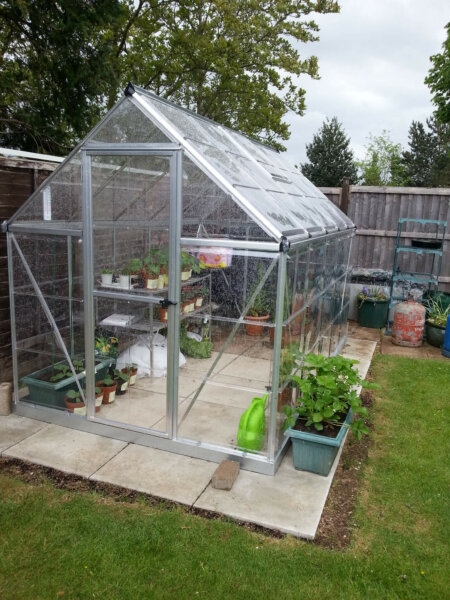
Each of these structures can be used for commercial or personal use, but some may be better for different purposes. For example, the lean-to greenhouse is usually attached to houses, and for this reason, it is mainly used for personal gardens.
In contrast, the detached greenhouse can be placed almost anywhere, making them usable for commercial and non-commercial use alike. Lastly, gutter connected greenhouses are used by commercial growers because you can attach multiple greenhouses together.
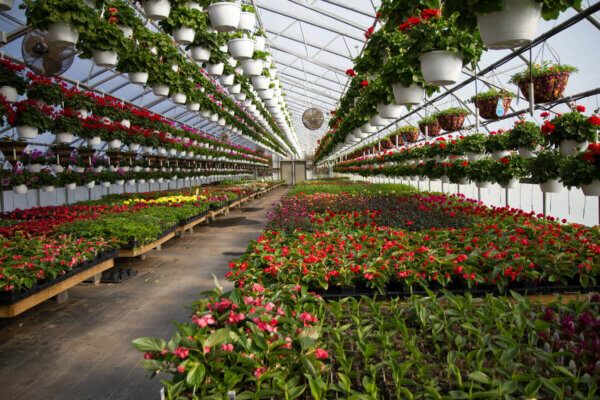
The structure, flooring, and greenhouse coverings can each be made from a combination of materials, each changing the effectiveness of your greenhouse. Plants are only as strong as their greenhouse, making it important for you to use the right building materials for an environment your plants will thrive in.
Structure
The structure of the greenhouse can be made from aluminum, galvanized steel, wood, or plastic. All the different greenhouse materials have different structures and panel types they work best with. Steel frames, for example, are a good choice for polyethylene sheets or polyvinyl chloride (PVC) based fabrics. If you’re on a budget, plastic is also a good option that won’t rot from moisture like wood.
Flooring
Typical flooring materials for a greenhouse are concrete, porous concrete, gravel, and dirt. Flooring material affects both your greenhouse’s heat efficiency and light transmission.
You should be wary of using gravel or dirt flooring because they do not retain heat or protect your plants from pests. Alternatively, porous concrete allows water to drain, retains heat better, and protects your plants from pests by creating an impenetrable barrier.
Cover
You can use glass, fiberglass, acrylic, double-sheet polyethylene film, polyvinyl chloride, and polycarbonate to cover your greenhouse. The covering is the most important aspect of your greenhouse because it will affect how much light your plants receive.
Different materials allow a specific amount of light to pass through, and offer varying amounts of diffusion. You should be careful when deciding the material for your cover because too much light can overheat plants, while shading can cause plants to die from a lack of energy.
Glass Greenhouses
When people think about greenhouses, a glass structure usually comes to mind. Glass greenhouses are probably the best looking option, but they often lack energy efficiency and can be costly.
If you choose to use glass, keep in mind that glass does not diffuse light, so you will need to decide on a diffusion method for your plants. There are two main types of glass greenhouses you can choose from, single pane and double pane.
Single Pane
These greenhouses aren’t suitable for northern gardeners, where crops are grown in colder climates. Single pane glass greenhouses are fragile, break often, and can’t withstand the weight of snow. The single-pane greenhouse is also the least energy-efficient greenhouse because the single pane allows heat to escape.
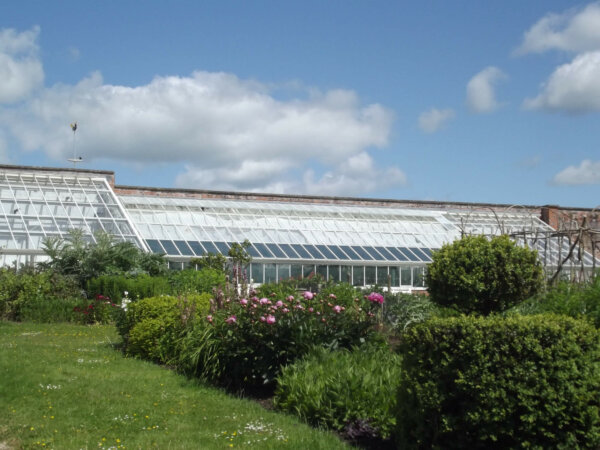
Single pane greenhouses are fantastic for light transmission, but this can still be an issue in areas where too much sun will burn your plants. These downsides, coupled with the fact that the glass is costly, means that single pane glass greenhouses are more suited for form than function.
Furthermore, the heating costs can be double, or even triple, the amount of a double pane or PVC based fabric greenhouse. The thermal insulation value, or R-value, of a single-pane glass greenhouse is about 0.9, so you will need to find a way to heat your greenhouse in colder months.
Double Pane
Double pane glass greenhouses are designed to be more energy-efficient without compromising traditional style. If you still want a glass style greenhouse, the double pane glass can reduce your heating cost by half.
These greenhouses have an R-value of 1.5 to 2.0, making them better than the single pane glass for insulation. Double pane glass greenhouses can also have a coating applied to the inside to reflect heat and add more insulation to the greenhouse. Before you buy a double pane greenhouse, you should also know that these are usually the most expensive type of greenhouse.
Polycarbonate Greenhouses
Polycarbonate greenhouses are made from thick plastic, making them cheaper and more versatile than most glass greenhouses. This material is superior to glass in some ways, however, there are still many issues. These greenhouses most commonly come with a single-wall or twin-wall polycarbonate sheeting.
Single-wall
While single-wall polycarbonate is more durable than glass, it still has many issues that you need to take into consideration. The single-wall polycarbonate sheets do not diffuse light or insulate heat well. In fact, the R-value of single-wall polycarbonate material is 0.83, while horticultural glass has an R-value of 0.93.
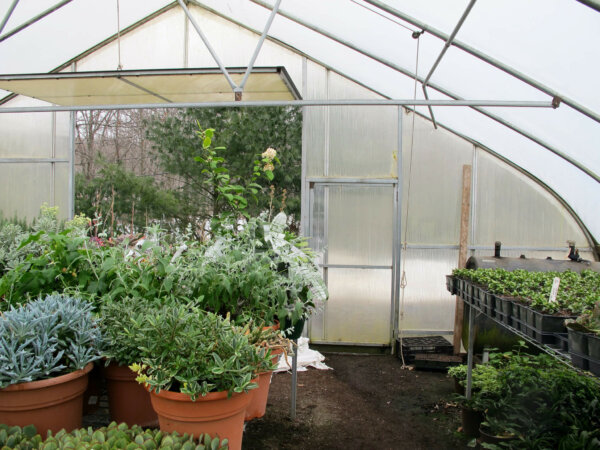
Single-wall polycarbonate is also inferior to glass in terms of light transmission. About 94-96% of light passes through single-wall polycarbonate, while 97-98% of light goes through horticultural glass. Single-wall polycarbonate is not ideal for growers because the material is flammable, making it difficult to insure.
Twin-wall
Twin-wall polycarbonate is better than single-wall polycarbonate in almost every way. The R-value of twin-wall polycarbonate is 1.42, making it better than single-pane glass or single-wall polycarbonate. Twin-wall polycarbonate also diffuses light, but only 80-84% of light passes through the panels.
In addition, polycarbonate panels are known to cloud over time. This clouding is called the yellowing affect. If you buy polycarbonate panels, you need to monitor the yellowing effect because it will reduce the light that passes through the panels. Condensation is an additional issue for twin-wall polycarbonate, which can lead to diseases in plants and poor light retention.
Polyethylene
Polyethylene film is inexpensive and lightweight, making it easy to use. The polyethylene (poly) film is typically made of one or two layers. Oxygen and carbon dioxide can pass through this greenhouse film because it is porous, allowing plants to breathe in a tightly sealed greenhouse.
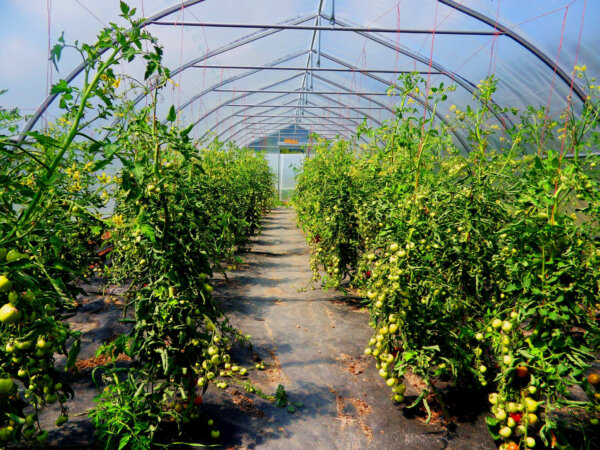
Poly plastic films are great for growers because you can customize the material with different coatings. A UV stabilizer can be used on the poly film to reduce sun degradation and yellowing, while an anti-drip coat will prevent excessive condensation. Another useful coat is the poly glazing that diffuses light. The diffusion coat allows growers to maximize space by ensuring all plants receive sunlight.
In comparison to glass, poly film reduces heat loss by 30-40%. Most poly film also ranges with an R-value of 0.87 to 1.7. The single-layered poly film has an R-value of 0.87, whereas double-layered poly film varies from 1.5 to 1.7. Unfortunately, poly film is still moderately flammable, placing it between glass and polycarbonate.
Fiberglass
Fiberglass Reinforced Plastic (FRP) is another good option for your greenhouse. FRP scatters sunlight, providing good diffusion and light transmission throughout your greenhouse, and can last up to 10 years. The panels of fiberglass have an R-value of 0.89, which is slightly better than glass. However, UV rays break down the fiberglass over time, making the cover brittle. To maintain the strength of your fiberglass panels, you need to apply a new UV coating every few years.
PVC Fabric
In terms of durability, Polyvinyl Chloride (PVC) fabric is the best choice. Some PVC fabrics can withstand heavy snow loads and offer increased insulation, making them good for growers in colder climates.
Translucent PVC fabrics with UV-treatments, including types engineered with UV stabilizers, allow light diffusion for your plants. The UV-treatment also prevents a yellowing affect in the fabric. For safety and insurance purposes, the PVC fabric can also be made flame retardant. Another benefit of PVC fabric is that installation is easy and doesn’t require special skills, so you can set up your greenhouse quickly.
Other Tips for Proper Light And Heat Efficiency
The greenhouse may do most of the work, but there are some additional ways you can increase your greenhouse’s efficiency. One way to give your plants extra installation is by using black pots. The black pots will hold heat, keeping the roots of your plants warm, due to the fact that black color attracts light. If you live in a hot climate, you should be careful using black pots because too much sun can cause your plants to overheat.
When you make your greenhouse, avoid using dark colors for anything other than the pots. Dark frames and mirrored surfaces, like aluminum, can absorb light your plant needs.
Benches and shelves in your garden should be painted in light colors, preferably white, because they will diffuse light. For this same reason, you should not use light colors for your pots.
Caulking is important to the energy efficiency of your greenhouse, especially in glass and polycarbonate greenhouses. Caulk is used to seal the panels of the greenhouse, and in the process will insulate, weatherproof, and pest-proof your greenhouse. You can also reduce excess moisture that introduces disease to your plants by using caulk.
Whatever you choose to build your very own greenhouse out of, it will provide a shelter for sustainable plant cultivation all year round. This means fewer trips to the store for produce, and reducing your contribution to companies shipping vegetables across continents for the sake of convenience. Even a small greenhouse with just a few seedlings growing will lead to just a little bit more self-sufficiency!
As a greenhouse grower, you are taking proactive steps to become self-sufficient and sustainable like other gardeners, except that you can grow in any season.
Article contributed by Rory Bagley.



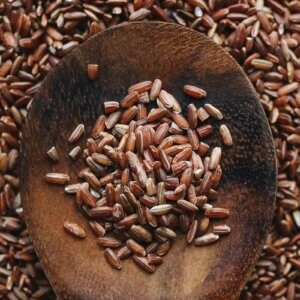

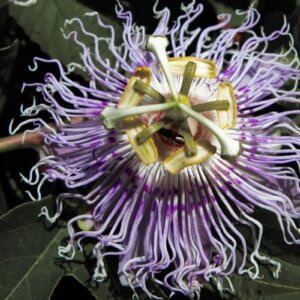
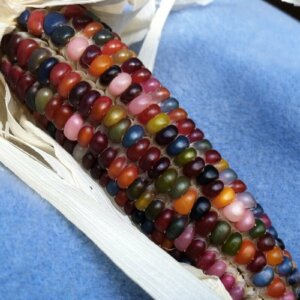
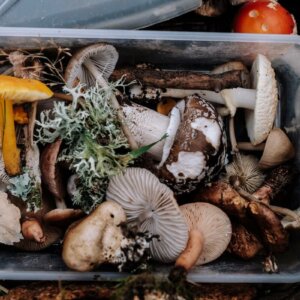
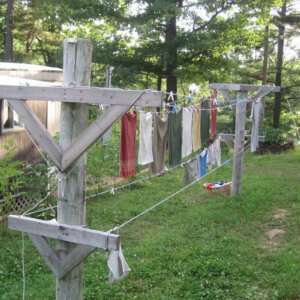
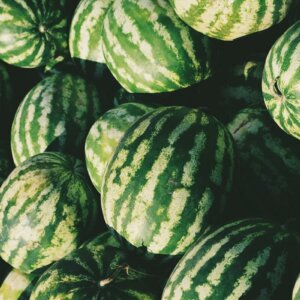
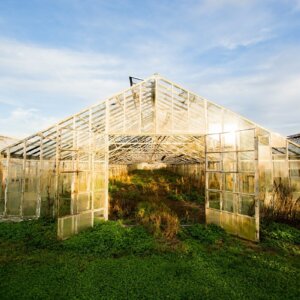
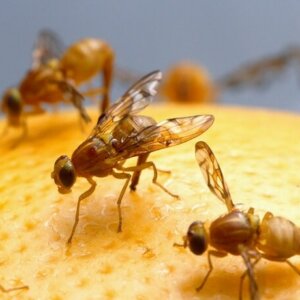

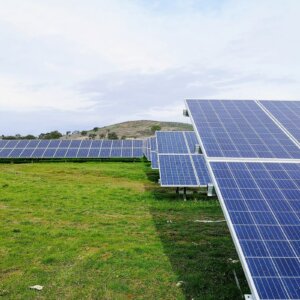

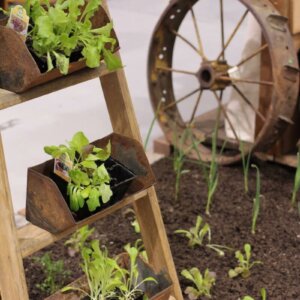

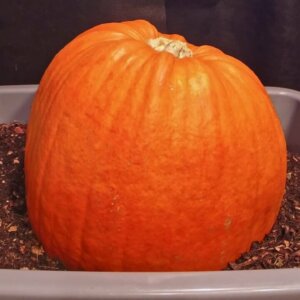
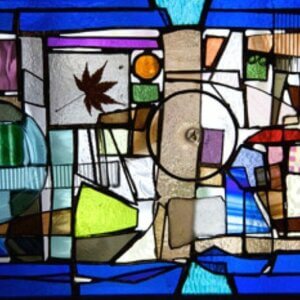
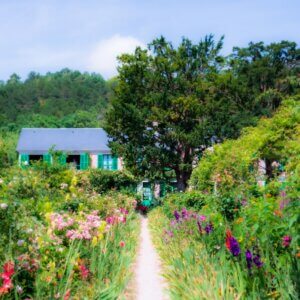
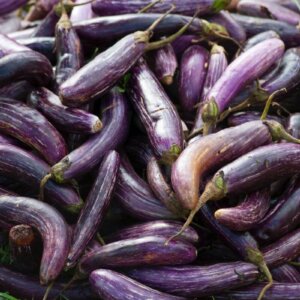
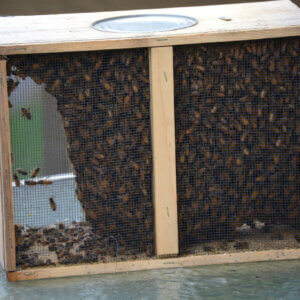


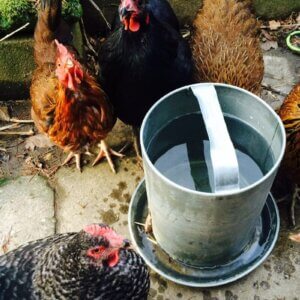




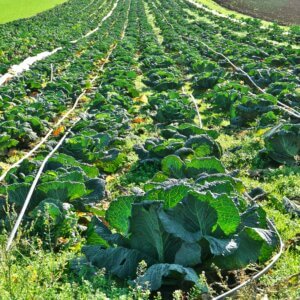



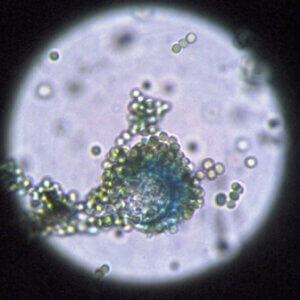
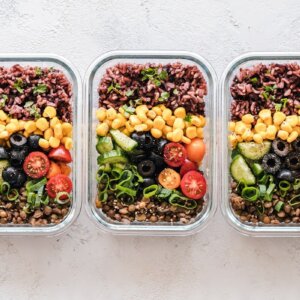
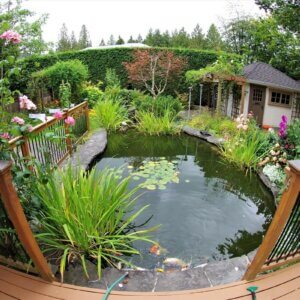


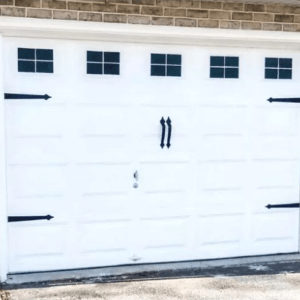
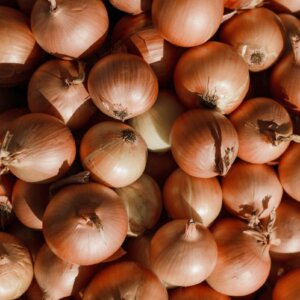
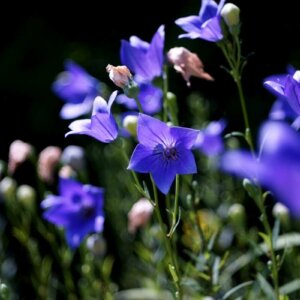
Retired last year. My wife and I are going to begin greenhouse gardening. Also, we are downsizing and moving to a smaller footprint. Our plan is to move many of our indoor plants into the greenhouse. So the greenhouse will be both a garden spot and a place to relax and enjoy our plants.
I want to start cheap green house
I need to know the available dimensions of green house roofing that you sell. I have old or recycled window panes I plan to use for the walls. I wish to get the dimensions of roof panels available these I would purchase. I plan to construct a knee wall of cement block with a gravel floor. The material I am interested in is the double pane polycarbonate.